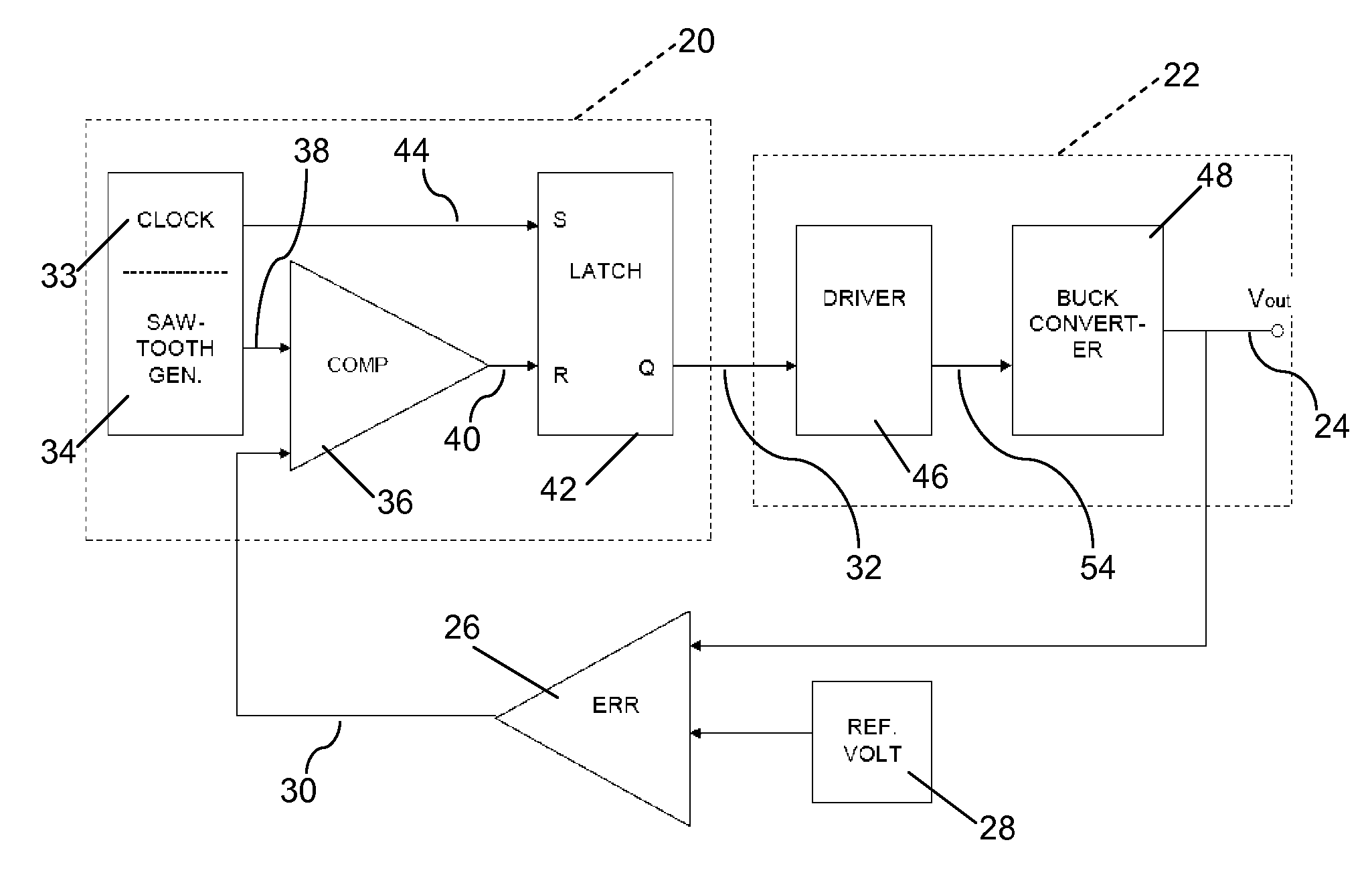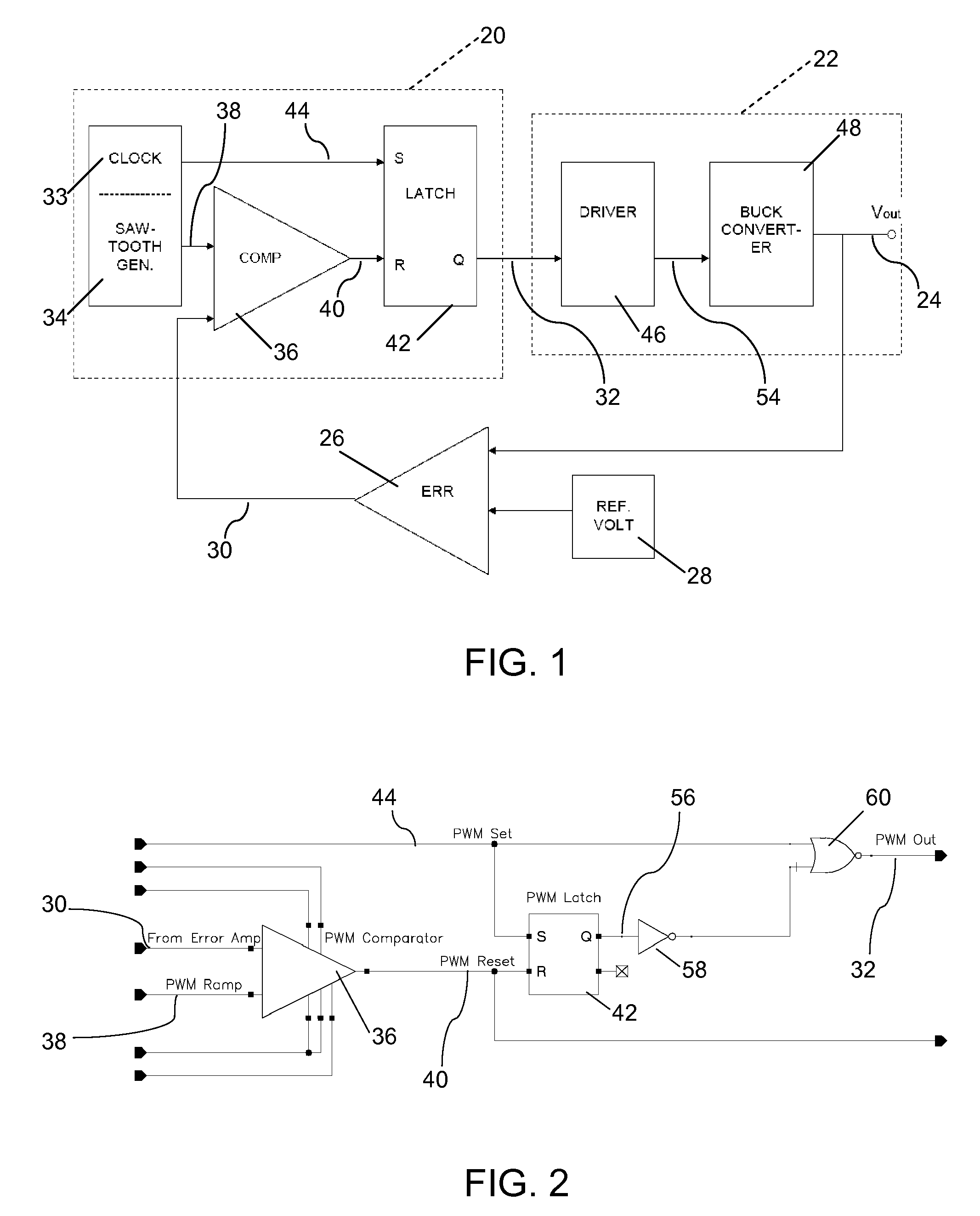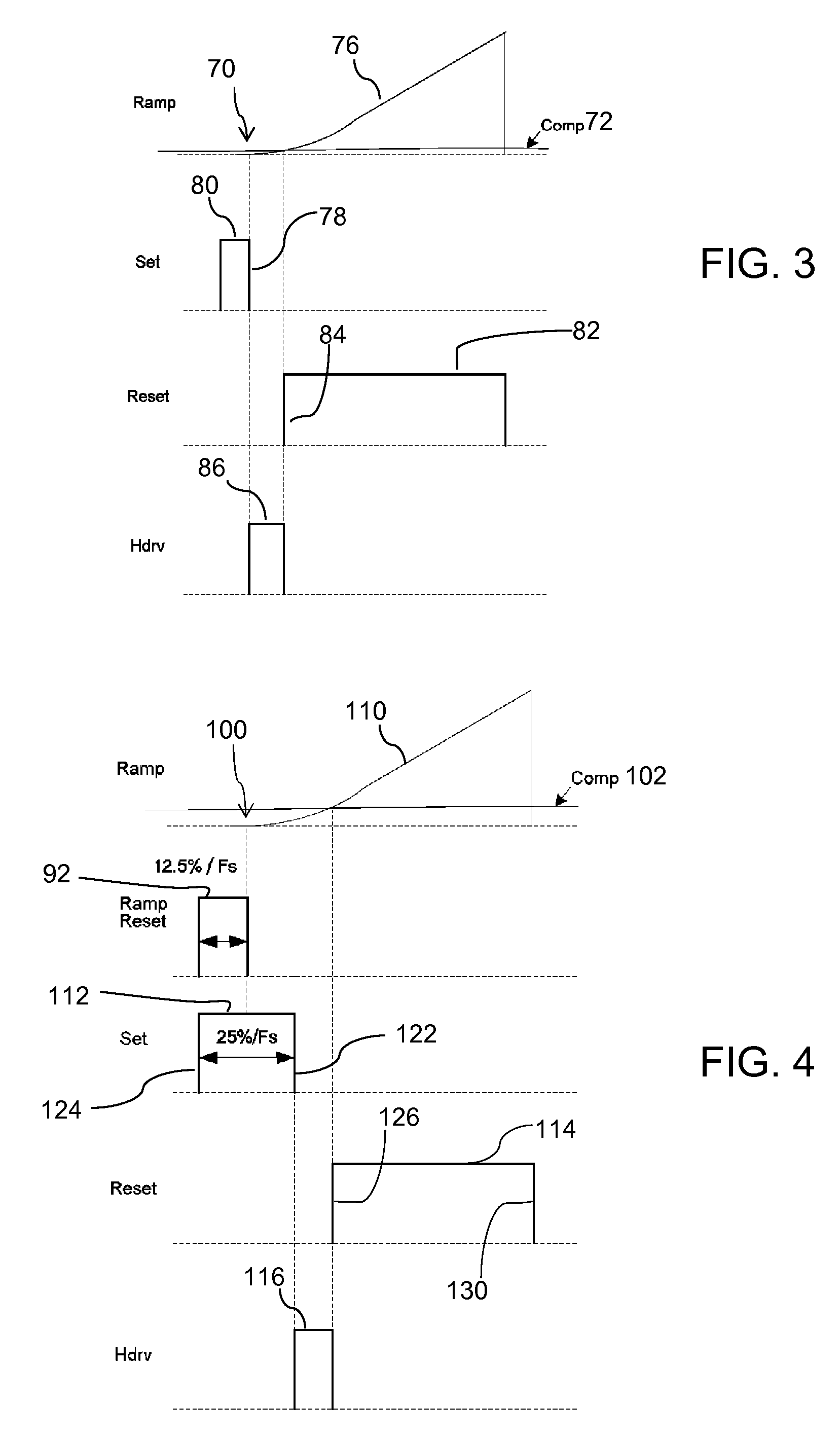Minimum pulse width for pulse width modulation control
a pulse width modulation and pulse width technology, applied in pulse techniques, dc-dc conversion, power conversion systems, etc., can solve the problems of reducing the voltage of the diode with temperature, limiting the operation of the pwm comparator, and reducing the duty cycl
- Summary
- Abstract
- Description
- Claims
- Application Information
AI Technical Summary
Benefits of technology
Problems solved by technology
Method used
Image
Examples
Embodiment Construction
[0026]In the following description of the preferred embodiment, reference is made to the exemplary drawings for purposes of illustrating specific embodiments of the invention, wherein like reference numerals designate corresponding or like elements among the several views. Embodiments of the invention will be described with respect to voltage mode controllers, and it is to be understood that the invention is not limited to the specific embodiments described and illustrated herein.
[0027]FIG. 1 illustrates a block diagram of a pulse width modulation (PWM) circuit 20. The PWM circuit 20 controls a power converter 22, the voltage output 24 or Vout of which is compared to a voltage reference 28 by a feedback voltage error comparator 26. The feedback signal 30 resulting from this comparison is supplied to the PWM circuit 20 for use as a feedback error control in adjusting the control pulse 32 provided to the driver circuit 46 of the power converter 22. The feedback signal may also be refe...
PUM
 Login to View More
Login to View More Abstract
Description
Claims
Application Information
 Login to View More
Login to View More - R&D
- Intellectual Property
- Life Sciences
- Materials
- Tech Scout
- Unparalleled Data Quality
- Higher Quality Content
- 60% Fewer Hallucinations
Browse by: Latest US Patents, China's latest patents, Technical Efficacy Thesaurus, Application Domain, Technology Topic, Popular Technical Reports.
© 2025 PatSnap. All rights reserved.Legal|Privacy policy|Modern Slavery Act Transparency Statement|Sitemap|About US| Contact US: help@patsnap.com



